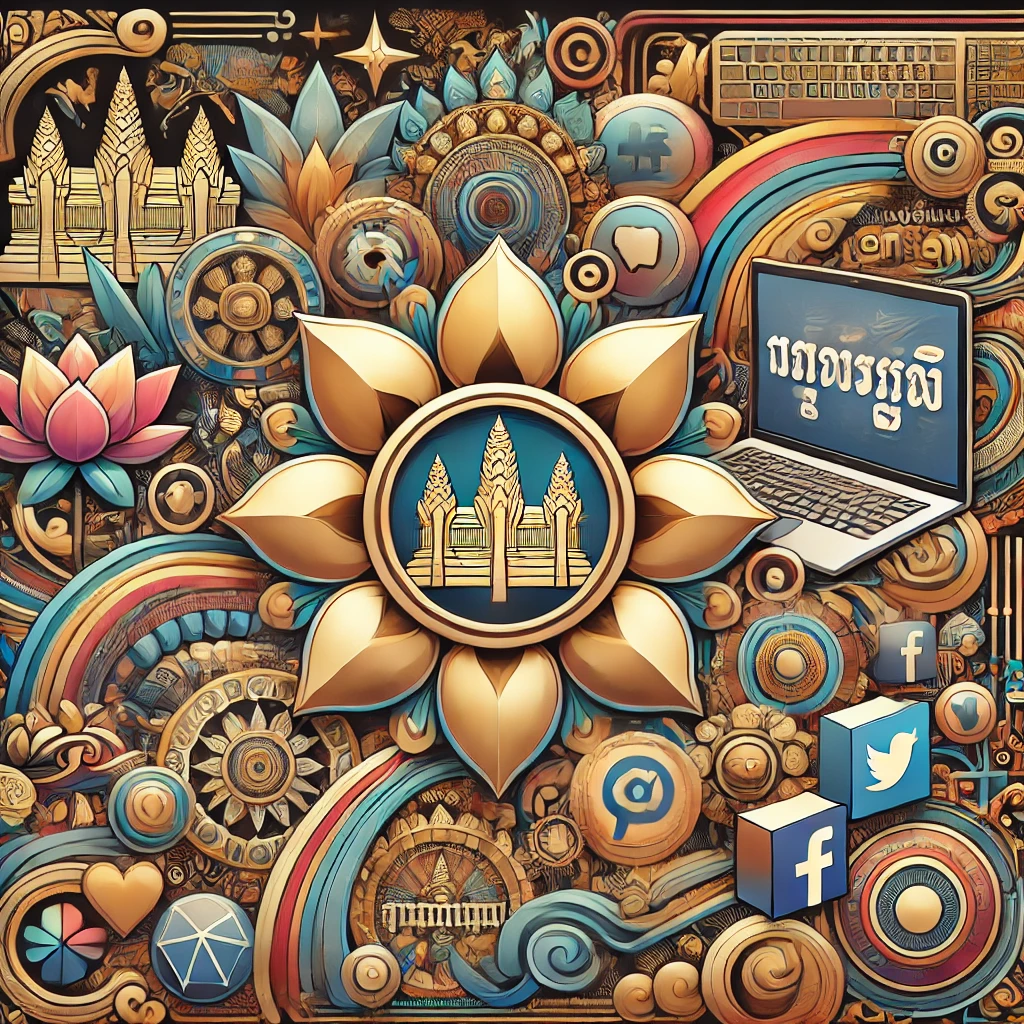The Khmer language (ភាសាខ្មែរ – Pheasa Khmae), the official tongue of Cambodia and the heart of its national identity, boasts a rich history reflected in its unique script derived from ancient Indian Brahmi systems. Like many languages in the 21st century, it navigates a complex landscape of challenges brought by globalization and technological shifts. Yet, Khmer also demonstrates significant resilience and adaptation, particularly in the digital realm, signaling a dynamic, albeit uncertain, future.
Challenge: Written Khmer and Younger Generations
Concerns exist regarding the proficiency and usage patterns of written Khmer among some segments of the younger generation. Factors contributing to this include:
- Digital Communication Habits: The prevalence of informal messaging often leads to the use of Romanized Khmer script (“Khmerlish”), phonetic spellings, abbreviations, and emojis, potentially reducing practice with standard Khmer orthography.
- Exposure to Literature: Shifts in educational focus or leisure activities may lead to less engagement with classical Khmer literature or extensive reading in Khmer compared to previous generations.
- Script Complexity: The intricate Khmer script, with its multiple consonants, vowels (independent and dependent), diacritics, and sub-consonants, presents learning challenges that can be daunting without consistent practice. While this is an observed trend and area of concern, it doesn’t represent a universal decline, as formal education continues to prioritize standard Khmer.
Challenge: Globalization and the Influence of English
Globalization has significantly increased the presence and prestige of English in Cambodia. This manifests in several ways:
- Loanwords: English terms are frequently borrowed, particularly in fields like technology, business, science, and pop culture, sometimes replacing existing Khmer terms or filling perceived lexical gaps.
- Code-Switching: Especially in urban centers and among those in international sectors, mixing Khmer and English within conversations (code-switching) is common.
- Economic Pressure: Proficiency in English is often seen as essential for higher education and lucrative employment opportunities, placing it in high demand and potentially overshadowing Khmer in certain professional domains.
Response: Promoting Khmer Literacy and Education
Recognizing these challenges, various stakeholders are actively working to promote Khmer language and literacy:
- Government Initiatives: The Ministry of Education, Youth and Sport (MoEYS) implements the national curriculum focused on Khmer literacy and promotes reading through initiatives like National Reading Day (March 11th).
- Non-Governmental Organizations (NGOs): Numerous local and international NGOs work on literacy programs, teacher training, and the creation and distribution of children’s books and educational materials in Khmer.
- Cultural Institutions: Buddhist pagodas continue their traditional role in providing basic literacy and moral education, often including instruction in Khmer script. Community libraries and cultural associations also play a part.
Adaptation: Khmer in the Digital Age
The development and adoption of the standardized Khmer Unicode system have been pivotal for the language’s presence online. This standardization allows Khmer script to be typed, displayed, and searched consistently across digital devices. Consequently:
- Online Content Boom: There has been significant growth in Khmer-language websites, online news portals, blogs, e-commerce platforms, and government e-services.
- Social Media: Platforms like Facebook, YouTube, TikTok, and Telegram are widely used in Cambodia, with vast amounts of user-generated content created and consumed in Khmer script.
- Digital Literacy: While accessibility has increased, challenges remain regarding consistent font support across all devices/platforms and varying levels of digital literacy among the population.
Adaptation: Preservation Through Modern Media
Modern media plays a crucial role in keeping the Khmer language vibrant and relevant, especially for younger audiences:
- Broadcast Media: Television and radio remain popular, offering news, dramas, comedies, and educational programs predominantly in Khmer.
- Film and Music: The Cambodian film industry produces movies in Khmer, and the music scene features artists performing in Khmer across various genres, from traditional to modern pop, rock, and rap.
- Online Creators: A growing number of Cambodian YouTubers, bloggers, and social media influencers create engaging content (vlogs, tutorials, comedy sketches, reviews) entirely in Khmer, fostering language use in contemporary contexts.
Foundation: The Role of Universities and Scholars
Academic institutions and linguistic researchers provide the essential foundation for understanding, standardizing, and preserving the Khmer language:
- Key Institutions: The Royal University of Phnom Penh (RUPP) and the Royal Academy of Cambodia (RAC), particularly through its National Language Institute (វិទ្យាស្ថានជាតិភាសាខ្មែរ), are leading centers for Khmer linguistics. Universities in provinces like Battambang also contribute through education departments.
- Linguistic Research: Scholars engage in crucial work such as lexicography (compiling and updating dictionaries), grammatical analysis, documenting regional dialects, studying language change, and participating in debates on orthographic reform.
- Educational Resources: Linguistic research informs the development of effective teaching materials, curriculum design, and language policies aimed at maintaining the integrity and promoting the use of Khmer.
Conclusion
As of early 2025, the Khmer language stands at a dynamic juncture. It faces tangible pressures from global linguistic trends and evolving communication practices, particularly among youth. However, it is far from static or declining overall. Proactive efforts in education and literacy promotion, coupled with the language’s robust adaptation to the digital age and its strong presence in modern media, demonstrate its vitality. The scholarly work underpinning language policy and education provides critical support. The future health of the Khmer language will depend on the sustained commitment of educators, policymakers, media creators, academics, and the community itself – ensuring this ancient script and rich linguistic heritage, deeply interwoven with Cambodian identity and culture, continue to thrive in provinces like Battambang and across the nation. Sources and related content





